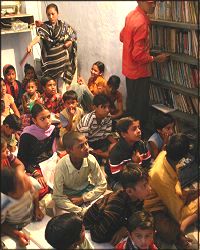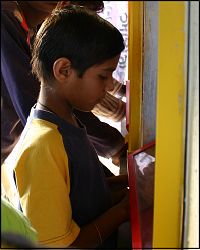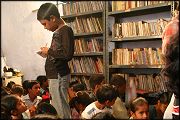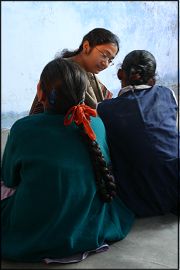
|

|
|||||||||||||||||||||||
|
||||||||||||||||||||||||
|
Home > News & Events > Who are the Chharas? |
||||||||||||||||||||||||
|
News & Events
More than 50 years after independence, we still refer to these tribes as De-Notified Tribes (DNTs). Members of these tribes are regularly rounded up for interrogation every time there is a petty crime in the neighbourhood. Their children still fall under the needle of suspicion and get thrown out of schools on flimsiest and unsubstantiated accusations. Private enterprise and the public sector continue to refuse them jobs. They are prosecuted everyday by anyone who has the power to do so. Things have begun to change for least one such DNT called the Charras, which populate a suburb of Ahmedabad. Sneh-Prayas, an Ahmedabad based NGO, Budhan Theatre Group, and some locals have come together to create significant breakthroughs for this community. The free evening school bustles with activity until late at night where older kids teach the younger ones and help them with homework. A library of mostly recycled books is at hand for those in need of a textbook or desirous of reading some fiction.
The early impressions based on our research are indeed very heartening. Majority of children [59%] aspire to be professionals, most children [89%] were aware of the significance of education and a very high proportion [66%] of children were aware of the benefits accruing from computers. If some of these experiments and initiatives do succeed, as I hope they will, then it would be nothing short of a miracle. A generation would throw away 150 years of baggage and find their place under the sun! |
|
|||||||||||||||||||||||
|
© Hole-in-the-Wall Education Limited 2015 | Privacy Policy | Terms of Use |
||||||||||||||||||||||||




